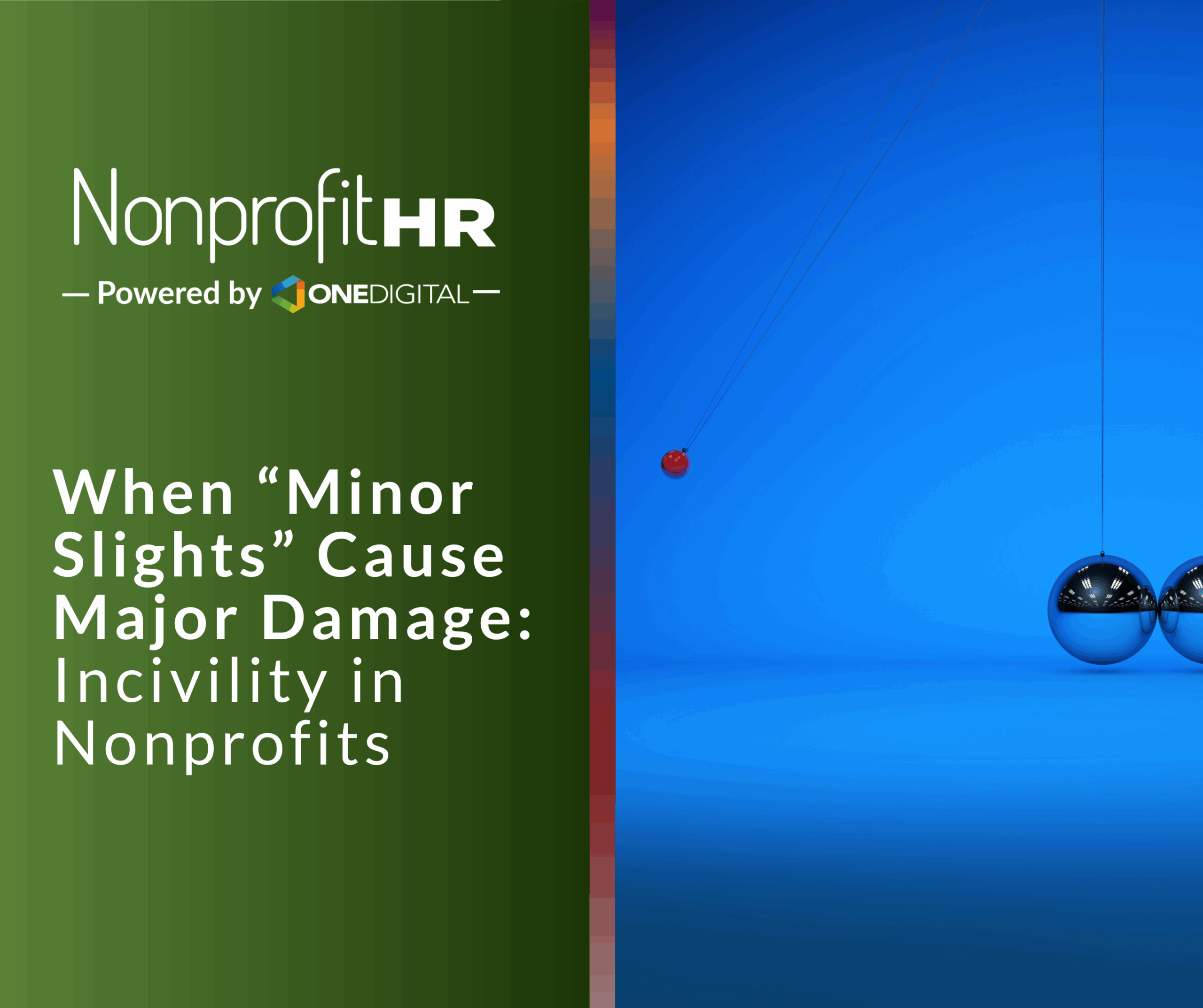WTOP: 5 ways nonprofits can…
According to Gallup’s 2017 Re-Engineering Performance Management Report, only 14% of employees strongly agree that the performance reviews they receive inspire them to improve. The ineffectiveness of traditional feedback approaches has been top of mind for organizations for years, and the movement to abandon these approaches is accelerating (even dubbed the “Performance Management Revolution”). Particularly now, with five generations present in today’s workforce, organizations are realizing the need to adopt a different performance management strategy because staff can no longer rely on performance reviews alone. The solution? Embrace a non-traditional approach by cultivating a culture of continuous feedback: a model that equips your organization to remain attentive to the needs of your staff to keep them motivated, engaged and genuinely promote their growth—all of which are critical to the success of your mission.
What Does it Mean to Have a Culture of Feedback?
The traditional annual feedback is often dreaded as the heavy lift. Promoting a culture of feedback means employing immediate, intentional conversations and as a result, lessening that load. Although in order for feedback to become a part of the culture, it must be continuous and bidirectional, flowing from the manager to the employee and from the employee to the manager. Successful bidirectional feedback comes when you stress the positives as much as the negatives. A feedback conversation could simply focus on support. How are you doing this week? How can we support each other? A culture of feedback means understanding the significance and value of those conversations and getting comfortable engaging in them.
When providing this feedback, express the why to demonstrate the ongoing investment in your people. As a people manager, understand that having purposeful conversations to indicate the reason you are including a direct report on a meeting or a lead on a project, for instance, is critical to reassuring them that they are receiving support and aids in clarifying the opportunity to expand their skill set. Being clear and specific in outlining the why of feedback conversations ensures that your employees don’t feel stagnant in their positions and fosters a relationship of trust where employees feel comfortable providing feedback in return.
As staff continue to work from home, research has shown that frequency of feedback is especially essential to engaging your remote workers—and the cost of disengagement is high. When working toward the advancement of a mission, there is no time or money to waste. This is why we have outlined three ways through which a culture of feedback will increase your capacity to deliver on your mission by establishing trust, promoting a career development mindset and ultimately accelerating the success and longevity of your organization.
1. Trust
Trust is the underlying principle when building a culture of continuous feedback, and it begins with leadership. Why? A culture cannot be shifted or changed by just talking the talk, leadership must be intentional about walking the walk—that is how that trust is built. It starts with promoting an anti-retaliation policy. This is the foundation for the development of trust because your staff need to feel safe and comfortable if you want to receive the type of candid feedback that is going to move your organization forward. As well, it is essential to ask questions around actual potential initiatives when gathering feedback. If leadership asks for feedback and then can’t create change, staff don’t feel heard. Find ways in which you can be specific about asking for feedback you know that you can deliver on. Leadership needs to not only outline expectations of what feedback will look like in terms of adopting an anti-retaliation policy and promising the implementation of bidirectional feedback, but also model it. People need to see it in action.
A strong culture of trust within an organization leads directly to feelings of belonging and building bonds with colleagues. With regard to a DEI, consider integrating trainings for people managers on how to provide and receive feedback across cultures. With more opportunity for feedback comes more opportunity for voice and influence across the organization. Trust also builds ownership among employees. Employees know that their feedback is heard and they feel involved in decision-making. This will also enable your team to address issues that come up and move to solutions quickly.
2. Career Development
Innate to ongoing feedback opportunities are elements of coaching and mentoring. Coaching and mentoring thrive within a culture of feedback. Incorporating these elements on an ongoing basis emphasizes the importance of having different types of conversations, from daily check-ins to more formal one-on-one meetings, all of which can be more than just performance-related conversations. For example, you can create guideposts every few months where you and your direct report have conversations to progress monitor performance goals and development goals. This allows for technical updates, as well as something that the employee is working toward.
In addition, with the implementation of multidirectional feedback, it is important to understand that both the employee and the manager are accountable in advocating for career development. The employee is now empowered to come to their manager with their ideas to advocate for their own growth, rather than waiting for their manager to prompt it. This model moves away from the sugarcoating that occurs within a “culture of nice” and toward the setting of clear expectations and a clear career path, combatting the “I’m just doing my job” mentality of the employee and promoting genuine development.
3. Success and Longevity of Organization
Particularly in the social impact sector, continuous feedback allows your organization to move in a more dynamic and nimble fashion because you know where progress stands in real time. It takes away the delay of action, allowing your organization to pivot toward solutions more swiftly. Further, in a culture of feedback, performance progress and career development hold equal weight, which not only motivates and promotes growth, but also ensures the future advancement of your organization. More frequent feedback allows for better alignment between—and thus, the greater ability to achieve—an employee’s individual goals and organizational goals.
We at Nonprofit HR abandoned the annual review process nearly ten years ago and have since seen organizations begin to prioritize the restructuring of their performance management systems. From our own success integrating tools such as TINYpulse to promote and build a culture of feedback, we help our clients contemplate, embrace and implement different types of continuous feedback models for their workplace. Ultimately, it’s about empowering staff to co-create their experience around their career, providing the opportunity to collaborate for success and then using that dialogue and growth to propel your organization forward.
By
 |
|
Read more on our blog performance management:
Diversity, Equity and Inclusion in Performance Management
Additional resources:
https://www.nonprofitpro.com/post/the-importance-of-performance-reviews/





























